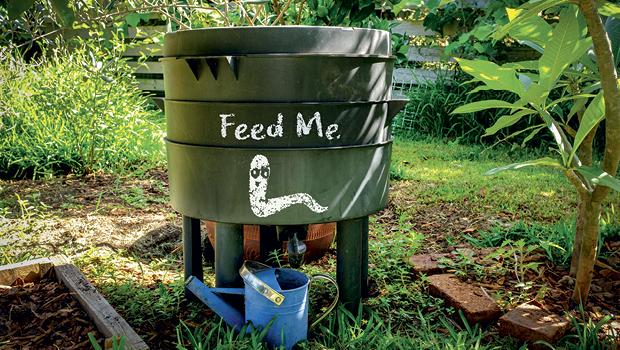Worm farms and tumblers
2020-06-18T04:50:28+10:00
Not everyone has the space in the garden for a compost heap -- that's where a worm farm comes in!
If you don’t have much space or many plants, or are only trying to recycle kitchen scraps, then a worm farm may be better than trying to make compost. It’s easy to buy multi-level long-lasting worm farms on sturdy legs (I inherited mine 10 years ago from my mum, who had it for more than 15 years).
How to set up a worm farm
Place in sheltered position out of direct sunlight and start adding your scraps and add your worms (you can buy compost worms at hardware stores and online). Worms will work faster if the scraps are roughly chopped, and they’ll need a blanket of natural fibre (old cotton t-shirt, hessian) over the top. If the scraps are very wet you might need to add shredded paper from time to time and every now and then you will have to add another level, but once working well they are pretty much set and forget. Harvest the castings when needed and add to pots and garden beds, use the dilute leachate to regularly water plants.
There are also inground worm farms you can buy or make yourself. In my last garden I made a vermin-free inground worm farm by re-using a large food-grade plastic-lidded bucket that was being thrown out by a local bakery. The lid was strong and clicked into place. There are excellent models available to buy. The advantage of inground is you can add bread and meat scraps that you can’t to normal worm farms and compost heaps.
Lastly, if vermin are a constant problem, another option is a compost tumbler. They are above ground and fully sealed and work well for smaller amounts, especially if green waste is chopped small before adding.
For more gardening tips and ideas get the latest issue of ABC Organic Gardener Magazine here.






